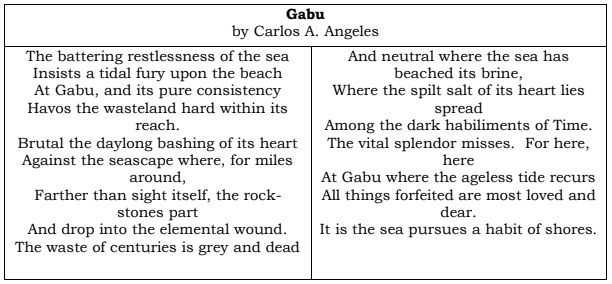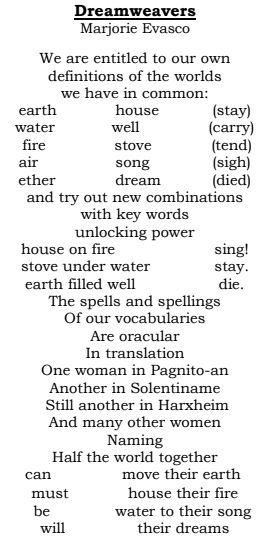2 21st Century
Lesson 2: Identifying Representative Texts from the Regions
The country’s rich repertoire of literary masterpieces may be rooted in the ==diverse
cultural heritage== of the Filipino people. They have produced varied texts because of
differences. The mighty roar of the North and to the fiery temperament of the South
blended well. ==The Filipinos speak of the collective experiences== from the people who
have gone through difficulties, triumphs, struggles, successes, armed conflicts,
bloodless revolutions, and others. It is the reason why these masterpieces resonated
loud and clear in the Philippine archipelago.



A Taste of Philippine Poetry
Located in the northwest of Luzon, ==the Ilocos Region or Region 1== is comprised of ==four provinces==, namely: ==Ilocos Norte, Ilocos Sur, La Union, and Pangasinan.== It is bordered to the west by the turbulent South China Sea, to the east by the Cordillera Administrative Region, the northeast and southeast by Cagayan Valley and the South by Central Luzon. Most of the inhabitants of the Ilocano homeland are concentrated along a narrow coastal plain. Because of geographical boundaries, these people often experience heavy rains and violent typhoons, especially during rainy seasons. The region, then, takes pride in long stretches of white sand and clear waters alongside its rich cultural heritage. What you are about to read is a poem written by a Carlos Palanca ==Memorial Awardee in Poetry in 1964==, ==Carlos A. Angeles==. His collection of poems entitled, ==Stun of Jewels==, also bagged him the ==Republic Cultural Heritage Award in Literature== in the same year.
A Moment of Silence
==Gabu== depicts a ==[coastline in Ilocos]()== that is constantly experiencing the ==battering restlessness of the sea==. The water that comes back to the shore seems furious and ruthless with its daylong bashing, which havocs the wasteland. Being an archipelagic country, the Philippines knows the importance of water and the sea.
\
A Taste of Tagalog Essay
More popularly known now as the ==CALABARZON== referring to the provinces of ==Cavite, Laguna, Batangas, Rizal, and Quezon==, ==Region IV-A== is home to ==Tagalog-speaking people== in the Philippines. Recognized all over the country for their ==bravery and fearlessness in battles==, CALABARZON has participated actively in the ==country’s fight for freedom and democracy==. It is ==home to many a Philippine hero foremost==, and among them are ==Rizal of Laguna==, ==Mabini of Batangas==, and ==Aguinaldo of Cavite==.
\
A Taste of Creative Nonfiction
==The island of Visayas== is one of the ==major geographical divisions== in the Philippines, the other two being Luzon and Mindanao. It is divided into ==Western==, ==Central==, and ==Eastern Visayas==. The Visayas region is comprised of several islands circling the Visayan Sea. Its people, therefore, ==share a sea-based culture and tradition== that may be rooted in a ==strong religious foundation==. ==The dwelling place of many festivals== such as the ==Ati-Atihan==, ==Di-nagyang==, ==Sinulog==, ==Pintados==, and ==Maskara==, the Visayas may indeed be considered as one of ==the cradles of Philippine civilization==.
\
Imagery: is a ==poetic element== that tries to create a picture in the mind of the reader or a mental image through the use of ==figurative language==.
\